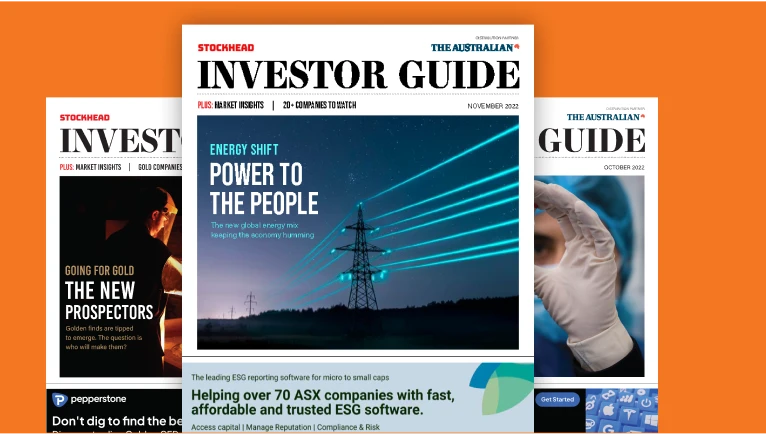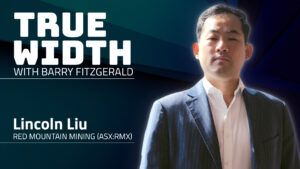The latest billion dollar gold merger shows the M&A tap continues to flow

The taps remain well and truly on for gold M&A. Pic: Getty Images
- Alkane Resources has announced a merger of equals with TSX-listed Mandalay Resources
- Will create a $1bn player with 180,000ozpa gold equivalent production and $188m in cash
- That makes the combined group a legitimate contender in future M&A processes
The newest billion dollar gold player on the ASX is setting itself up to build a stronger hand in the poker game brewing over Australia’s gold scene.
Alkane Resources (ASX:ALK), the owner of the Tomingley gold mine in New South Wales, and TSX-listed Mandalay Resources, which owns the Costerfield mine in Victoria and Björkdal mine in Sweden, announced the merger of equals yesterday.
The combination, which will create a pro-forma $1.013bn gold producer with a primary Aussie listing, is the latest to emerge as gold prices bounce along at a near record price of US$3300/oz.
While it’s been in the works for months, the deal comes after a flood of activity such as Northern Star Resources’ (ASX:NST) $6bn takeover of Hemi gold project owner De Grey Mining, Ramelius Resources’ (ASX:RMS) and Spartan Resources’ (ASX:SPR) proposed $4.2bn merger, Gold Road Resources (ASX:GOR) rebuffing a $3.3bn takeover offer from its Gruyere JV partner Gold Fields and a host of project level acquisitions of assets spat out by overstuffed majors.
After the deal clears shareholders and foreign investment approvals, the combined entity will have a pro-forma production profile of 160,000ozpa gold equivalent rising to 180,000ozpa from 2026, with $188m of combined cash in the bank.
While their dispersed operations may have few obvious synergies, that as well as the enhanced liquidity will provide Alkane with inclusion to various indices including the GDX and ASX 300 – bringing passive investment flows into play – and make the company a more meaningful player when it comes to competitive M&A.
“So that’s one aspect that allows us to do inorganic growth,” Alkane MD Nic Earner, who will become MD of the combined entity, said.
“The second thing that allows us to do inorganic growth is … some of these non-funded developers, we could if we so chose pick one of those up and have a pathway through to development pretty easily.
“Whereas if you pick that up as a smaller company, people are like, ‘oh, you’re going to have to do some sort of dilutive raising’. So it opens both of those avenues should the board choose to take them.”
Exploration muscle
Earner added that each of the Tomingley, Björkdal and Costerfield assets, the latter also the largest antimony producer in the West, all have opportunities to extend their lives and expand their production profiles via exploration and infrastructure developments.
While that may be in the order of 15-20%, Earner says at current gold prices, that is significant in terms of the cash they can generate.
There are already some obvious takeover targets once the deal completes. Alkane already holds ~6% of WA gold developer Medallion Metals (ASX:MM8), while Mandalay’s Costerfield sits up the road from gold-antimony exploration darling Southern Cross Gold (ASX:SX2) in Victoria.
Earner and Mandalay president Frazer Bourchier acknowledged those would be companies in the “upper quartile” of opportunities to look at.
However, they said future M&A decisions, if any, would be up to the miner’s incoming board, which will include two nominees from Alkane (including Earner), three from Mandalay and an independent chair in Barrick director Andy Quinn.
Gold prices could, ironically, become a barrier to future deals as developer valuations follow producers higher.
“You can go back to the development path of Bellevue for instance. They were very open to a sale transaction but the valuations they received meant that they were pushed into a development pathway,” Earner noted.
“You can have the best will in the world but just not agree on value. And I’m not saying that’s with one of those other parties, what I’m saying is that it’s a difficulty at the moment as everybody and their shareholder base hopes for more value to come.”
But the desire to build scale and cash flows at a time of record gold prices does mean more consolidation is on the horizon.
“What (the gold price is) really doing is differentiating between those who are generating cash and those that aren’t. And that drives the M&A landscape a lot,” Earner said.
“In our particular case, if you look at the amount of free cash that we’ll be generating and you look at where our market cap is, you can see a lot of value and a lot of upside in our stock.
“I do expect consolidation in the sector.”
Bourchier said there remained undervalued gold stocks in the market, with a sense of disbelief keeping the valuations of explorer and developers suppressed, while he shares the opinions of bullish commentators that generalist money had not yet flowed into the gold equity market.
“Even irrespective of all that scale and size matter in this industry, getting that capital market scale moving up a level will get us more attention,” he added.
Antimony kicker
Mandalay, which has seen its shares lift 115% in the past year in Toronto, has received a two-pronged boost in recent times.
It’s on track to produce 85,000-95,000 gold equivalent ounces this year. That includes 1050-1150t of antimony from Costerfield, the only material commercial producer of the critical mineral outside China, Russia and Tajikistan.
That’s been a massive bonus, with export controls from China in September last year, followed by a complete ban on exports to the US in December, sending prices up from ~US$13,000/t at the start of 2024 to over US$55,000/t today.
It makes Costerfield a strategic asset for the West, with the price rise seeing the share of revenue generated by the commodity at the mine lift from around 10% to ~30%.
For the combined group it will make up around 12-15% of revenues, Earner said.
Bourchier stressed that the company would be a gold company with an antimony “side angle”. Yet the strategic significance of the Costerfield asset remains stark.
How Costerfield works is that half of its gold is recovered from a gravity circuit, and is sent to Melbourne for refining.
The other half reports to a concentrate with both gold and antimony which is shipped to China, Oman and Mexico for processing.
Used in artillery and solar panels, the commodity became a key talking point after China issued export controls, ostensibly in response to US restrictions on the export of semiconductor parts and technology.
“Russia, Tajikistan and China produce 87-90% of all the world’s antimony. That means, ironically, Costerfield, Mandalay, and now MergeCo, are the largest producer of antimony in the Western world,” Bourchier said.
“There’s a lot of mom and pops in Bolivia, a little bit in Turkiye, some in Peru, but as far as the largest recognised producer – not companies that plan or hope to produce like maybe Southern Cross or Perpetua or Larvotto – but actual producer for the last 15 years, is us.
“That’s partly a reflection of how limited that world is, and because of the strategic angle of antimony.
“Because of the geopolitical situation it’s given an extra amount of attention to our company, and not just because of the revenue and the extra cash we generate from that, but also because of the importance and significance of that critical mineral.”
Earner, who previously worked as a general manager at developer Larvotto’s Hillgrove site, said the combined company would maintain the market knowledge built by Mandalay, with key executives including chief operating officer Ryan Austerberry to join the enlarged group.
At Stockhead, we tell it like it is. While Medallion Metals is a Stockhead advertiser, it did not sponsor this article.
Related Topics

UNLOCK INSIGHTS
Discover the untold stories of emerging ASX stocks.
Daily news and expert analysis, it's free to subscribe.
By proceeding, you confirm you understand that we handle personal information in accordance with our Privacy Policy.








